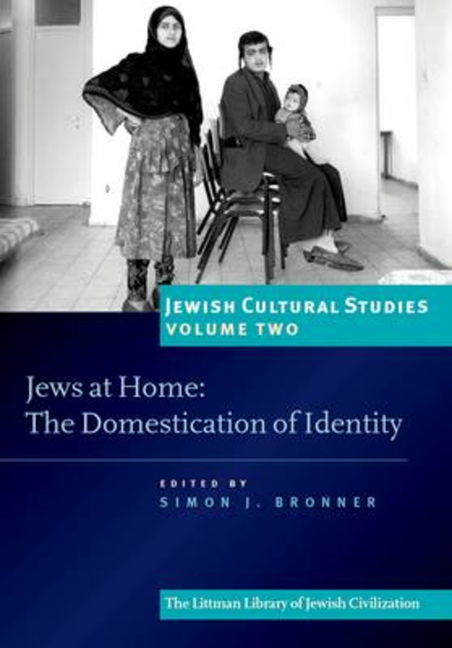Book contents
- Frontmatter
- Dedication
- Miscellaneous Frontmatter
- Acknowledgements
- Contents
- Note on Transliteration
- Introduction: The Dualities of House and Home in Jewish Culture
- PART I IN AND OUT OF THE HOME
- 1 The Domestication of Urban Jewish Space and the North-West London Eruv
- 2 Every Wise Woman Shoppeth for her House: The Sisterhood Gift Shop and the American Jewish Home in the Mid-Twentieth Century
- PART II SACRED, SECULAR, AND PRO FANE IN THE HOME
- PART III WRITING HOME
- PART IV FORUM: FEELING AT HOME
- INTRODUCTION
- RESPONSES
- Contributors
- Index
2 - Every Wise Woman Shoppeth for her House: The Sisterhood Gift Shop and the American Jewish Home in the Mid-Twentieth Century
from PART I - IN AND OUT OF THE HOME
- Frontmatter
- Dedication
- Miscellaneous Frontmatter
- Acknowledgements
- Contents
- Note on Transliteration
- Introduction: The Dualities of House and Home in Jewish Culture
- PART I IN AND OUT OF THE HOME
- 1 The Domestication of Urban Jewish Space and the North-West London Eruv
- 2 Every Wise Woman Shoppeth for her House: The Sisterhood Gift Shop and the American Jewish Home in the Mid-Twentieth Century
- PART II SACRED, SECULAR, AND PRO FANE IN THE HOME
- PART III WRITING HOME
- PART IV FORUM: FEELING AT HOME
- INTRODUCTION
- RESPONSES
- Contributors
- Index
Summary
Unlike the synagogue, where procedures are necessarily a compromise between contending conceptions (or where somebody may attend a religious service to be ‘seen’ or because he was invited by a relative or friend), religious practice in the home is a more nearly perfect reflection of individual conviction and desire. And, unlike the house of worship, where practice may be influenced by a religious specialist, the home has no professionals. (Sklare and Greenblum 1979: 49)
Marshall Sklare, a path-breaking professional in his own right, convincingly described the home as a measuring stick of Jewish identity on the suburban frontier; but he overlooked a whole class of aspiring ‘home professionals’. In the post-war period, Reform and Conservative synagogue sisterhoods trained their members in the art and science of American Jewish homemaking. The Reform National Federation of Temple Sisterhoods (NFTS) and the Conservative Women's League (Women's League) developed a multifaceted curriculum for home observance that saw the education and training of Jewish women as the most direct means of affecting the ‘individual conviction and desire’ of the American Jewish family.
The sisterhoods’ home-observance curriculum was predicated on three assumptions regarding American Jewish life. First, the responsibility for its healthy future rested on the shoulders of Jewish women generally, and Jewish mothers specifically. Second, this healthy future was jeopardized by the ignorance of young Jewish families regarding their culture, coupled with the allure of American Christian holiday traditions. And finally, consumption was, in part, a key to correcting this condition. Motivated by these assumptions, sisterhoods created curricular materials designed to make home observance accessible and appealing to the modern American Jewish woman. The NFTS and the Women's League sponsored holiday workshops where they taught prayers, songs, and recipes to their members. The Women's League published the popular religio-domestic guides, The Jewish Home Beautiful (first published in 1941) and Across the Threshold (first published in 1959) that advised Jewish women on a modern approach to holiday and everyday Jewish living. Both Reform and Conservative sisterhoods created synagogue gift shops where their members could purchase the objects required for festive home observance. These various elements— workshops, guidebooks, and gift shops—worked in tandem as part of a sisterhood programme meant to jump-start American Jewish home observance.
- Type
- Chapter
- Information
- Jews at Home , pp. 75 - 104Publisher: Liverpool University PressPrint publication year: 2010



